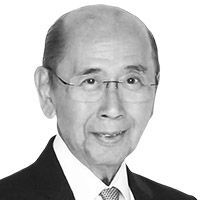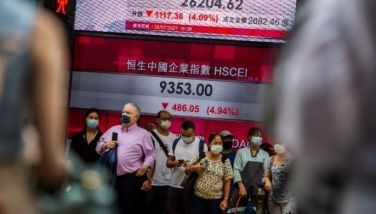Fitch: Philippine upgrade

The move by Fitch Ratings to upgrade the Philippines’ credit rating from junk status to investment grade, for the first time in our history, represents an important vote of confidence for the country whose economy has been the best performing in the region over the past few years. Indeed, the New York Times in an article written by Bettina Wassener and Floyd Whaley declared that the Philippines, “once the sick man of Asia: badly managed, corrupt and poor†is now no more, acknowledging this as the pay off from years of efforts by the government of President Benigno S. Aquino III. Fitch cited “improvements in fiscal management†begun under the administration of Gloria Macapagal- Arroyo†as one of the reasons for its decision.
This Fitch pronouncement was indeed historic and the Aquino administration and the BSP under Governor Say Tetangco deserves our congratulations. I will not dwell any further on what my fellow columnist Boo Chanco already narrated on the challenges ahead that must be addressed if the country is to sustain this growth momentum and indeed, finally muscle its way out of its boom and bust cycle. I will however take this opportunity to talk about one added challenge that at first glance might not seem so relevant – health care.
One of the key challenges mentioned by Boo and by economic analysts is the ability of the country to attract foreign direct investment as it appears the momentum is growing for a second wave of outward investments in the region (we missed the first one), led by Japan. This is in response to developments, some triggered by natural disasters and political conflict but mostly by structural changes that had impacted on costs in the country which hitherto had been the location of choice for manufacturing– China.
One of our distinct advantages is our demographic make up which makes us the youngest in the region compared to the rest of Asia. But as an HSBC report said, this requires that the government be able to provide the right education and jobs if it is to realize its potential. To this I might add, not just an educated but a healthy population as well. Which brings me to the point of this article – health care.
Universal healthcare and challenges
The Aquino administration has expressed the attainment of universal health care (UHC) as the health agenda for 2010-2013. UHC is defined as a focused approach to health reform implementation supported by sustainable and structured health financing, thus ensuring that all Filipinos, especially the poor, receive the benefits of quality healthcare. This is a deliberate focus on the poor to ensure that they are given financial risk protection through enrollment to PhilHealth and that they are able to access quality health care and services in times of need.
The attainment of this laudable objective will be fast-tracked with the provision of appropriate funding, which I am informed will happen if the sin tax collections are as robust as envisioned. Rumors seem to indicate that collections have been below expectations so far. On the flipside, if sin tax collection kicks in, the challenge for the DOH and Philhealth will be absorptive capacity to put to appropriate and timely use the increased resources to greatly improve health indicators especially of the poor.
Overall, the health challenges confronting us are: financial ability; insufficient access to quality healthcare from hospitals and health facilities; attainment of Millennium Development Goals (MDG) by 2015, and disparities in health outcomes particularly in low income areas, namely: ARMM, MIMAROPA, Eastern Visayas, Zamboanga Peninsula, Bicol, Davao Region and Caraga. Of the eight MDG, three are on health: infant mortality, maternal care, and eradication of diseases. The UN sees these as central in the fight against poverty. Education, by the way, is the other key component of the MDG.
Access to affordable quality medicines is another challenge. The most significant legislation in this area was the Cheaper Medicines Law of 2008. In 2009, the government declared 50 percent price reduction on 21 drugs. One year after implementation, it was shown that only those that had enough purchasing power and not those in the lowest income quintiles were the ones that benefitted from this reduction. This experiment only proved that access is not merely a function of price, but primarily the availability of doctors and healthcare access points – soft and hard infrastructure that will hopefully be addressed through UHC. An ADB study showed that access to modern medicines continues to be the most common aspiration of the poorest of the poor and yet only 40 percent of the population is able to buy the medicines they need. Given the issue of affordability among most Filipinos, a majority of whom live under $ 2.00 a day, the only way to address their healthcare needs is by giving it for free. UHC is a long-sought promise for many, which this administration can hopefully achieve by the end of its term.
The old adage “health is wealth†is in fact empirically proven. A country that invests in the health of its people creates a deep and sustainable source of future growth by creating a productive population. The question remains how quickly the Philippines can move to “healthy†so that it can begin to transform this into “wealthâ€.
Taxes
The recent speech of President Aquino at the FFCCI must have jolted the audience from their usual complacency when listening to our political leaders, accustomed as they are to being praised and being requested support. This time, the President had another message: Pay your taxes! He then proceeded to cite the embarrassing statistics of the Chinese federation members’ performance in contributing to the national government’s coffers.
The President did not pull out those figures from thin air. The BIR’s data base was obviously checked versus the names of the members. It is gratifying to note that the BIR IT system and software is being effectively utilized. This goes to show how productive BIR can be if they utilize today’s technology.
Even as I commend BIR commissioner Kim Henares and Secretary Cesar Purisima in providing this information to the President, I eagerly await further revelations about how other clubs and associations measure up in the tax compliance scale.
(Above is a reprint of the same column that was first printed in the April 5 issue of The STAR but which was erroneously bylined Gerardo Sicat under the column Crossroads. This reprint is to set the record straight: that the author of the piece is Roberto R. Romulo under the column Filipino Worldview. Our apologies to Messrs. Romulo and Sicat. – Ed)
- Latest
- Trending



























